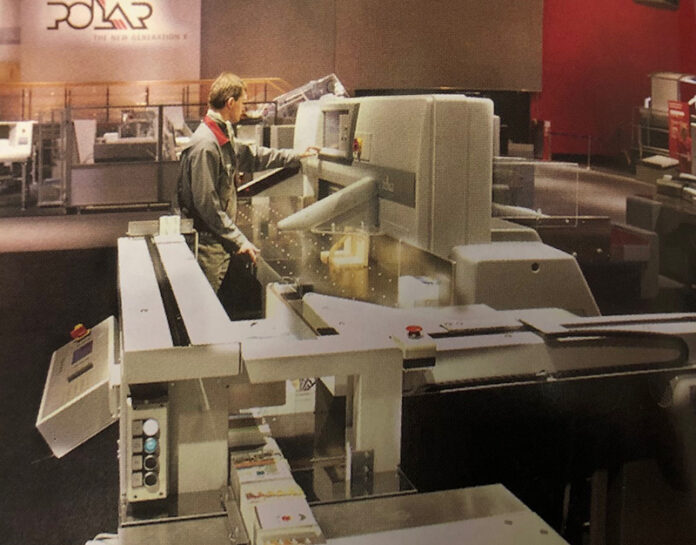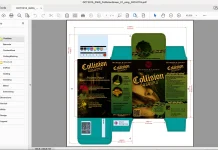by: Dan Maurer, Rob Kuehl and Steven Calov, Heidelberg
It’s been said the cost to retain a customer is a lot less than the cost to get a customer back. As the print industry pushes into the era of lean manufacturing and quality control, both offset and digital presses have benefited from advances in integrated color management, inline image quality inspection and efficiency optimization. But quality is only good if the finished product shipped meets your customers’ expectations. Our hyper-competitive environment leaves little room for error, and the cost of a returned job may mean more than just the cost of a reprint – it may mean losing a customer.
Quality measures in the bindery are increasingly a focus for printers, accompanying the speed and efficiency gains of the latest automated equipment. Perhaps this is part of the reason why NAPL’s 2009 study of the top expected capital investments of commercial printers ranked finishing investments as the number two priority. Not only can these systems prevent job returns, but a sales team also can use this capability to sell jobs at higher profits. Print buyers’ marketing and procurement departments don’t want to risk the embarrassment of a defective product on their end and are willing to pay to make sure it doesn’t happen.
Invest in Quality Equipment
Quality inspection in finishing takes on several dimensions. Sensing technologies integrated into software systems on the latest machines can verify that every product is produced as expected. Before even checking the final quality output, the first and least expensive improvement is simply making sure that all of the high-quality finishing equipment is maintained to the best standards in order to produce consistent superior results. How many people thought they were getting a deal on a low-cost alternative, only to find that getting repeatable quality off the machine and getting the makeready set up to achieve good results proved too time consuming? The quality of the knife in a cutter, or a stitcher’s trimmer, or the fold roller condition can compromise a job’s profit potential. Even the accuracy of a cutter’s backgauge can have a profound affect on cutting quality, including the ability to tilt the back gauge for image-to-sheet skew. Implementing a quality control program with mandatory maintenance intervals also can yield major cost savings.
To illustrate the point, let’s take a closer look at guillotine cutters. Once upon a time, these were among the simplest machines to be found in a printing plant. Today, however, cutter manufacturers have reinvented cutting technology in light of automation and digital workflow. Examples would include quality control inspection with minimal paper waste through software programming, which enables jobs to be assembled automatically and added to the queue faster by storing instantly retrievable cutting programs. The operator not only saves considerable downtime by eliminating the need to enter job data manually to configure the cutter, but also avoids data-entry errors that could miscue the cut and spoil the product. A consistent cutting process minimizes errors, and builds confidence and coherence throughout the cutting and finishing process.
By the same token, fully automated cutters reduce the production time with fewer workers and turn the operator into a supervisor as the machine takes over most of the cutting functions. This eliminates bending or lifting, as well as reduces time and material waste, delivering top quality through mechanized routine sequences. Advanced software can tie into MIS systems to convey vital setup and job costing information to make sure profitability remains on track.
Simplify Makeready Processes
Another quality control improvement area can come from ensuring that makeready is done efficiently, keeping operators from using short cuts to get to production more quickly by sacrificing quality. Automation from prepress sent directly by JDF to a cutter, folder or stitcher helps reduce both makeready time and operator fatigue. While there’s always a risk of prepress making an error in the file, the time required to verify a job set up is often a lot less than starting from scratch.
The second part of automation is saving job parameters in the machine, so that a second or third shift operator can recall the job, making sure the output is consistent from first to last piece, as well as for repeat jobs. The condition of the equipment and its built-in design performance is also key. Lastly, consider how a relatively low-cost but high-gain improvement can be achieved by using the appropriate delivery system. Non-marking deliveries on folders are an example, and banding solutions can make sure that signatures are not damaged during material handling to a stitcher or binder.
Take Advantage of Technology
If these first two measures represent proactive quality improvements, what about closed-loop quality verification? The latest finishing equipment includes advanced sensing technologies that are integrated into the machine’s software to monitor each piece so that it’s produced as intended. These systems range from relatively simple to an extensive integration of technology. Examples include stitchers and perfect binders, and run the gamut from cameras and bar code readers to oblique and long book error monitoring, missing stitch detection and trimming quality monitoring.
Even better are systems that can identify a defective book, eject the defect and continue production without stopping. The very latest perfect binding technology includes glue thickness sensing so that each book achieves the best bind. Similarly, folding carton folder-gluers now have integrated carton ejection for eliminating cartons that are badly glued or with image defects. This capability is critical in both pharmaceutical and cosmetic box applications.
From there, we move into more complex camera inspection systems integrated into all areas of finishing. Label manufacturing now includes cutting systems that use cameras to make sure labels aren’t intermixed. We don’t want carrots labeled as peas, right? Folders can integrate cameras and vacuum mail tables to pick and place samples and variable products onto mail pieces, while also verifying the correct product matching and location quality of the glued product. For several years now, cameras have been used to provide the customer with verification that every piece in a given job was produced and labeled accurately.
Some people in our industry long for the “good old days” and bemoan how stressful the competition in our industry has become. That’s a shame, because it’s such an exciting time to embrace technology in all areas, from web-to- print to MIS to the integration of lean manufacturing practices, together with amazing finishing applications and quality measures. As an equipment manufacturer, we find that the opportunities these advances represent enable us to get closer to our customers, working with them on customized engineering projects that help solve problems and drive profitability. The key is to think outside of the box. Talk to your customers about the cost of quality, and think of your equipment provider not as the guy you call to replace that aging cutter or folder, but as a business partner you call on when youre scratching your head over a complex finishing job, a material flow bottleneck, lean Six Sigma implementation and the integration of tools to raise the level of your quality and profitability.
Heidelberg develops and manufactures precision printing presses, equipment for plate imaging and postpress finishing, as well as digital inkjet systems for packaging manufacturers. For more information, visit www.us.heidelberg.com.





